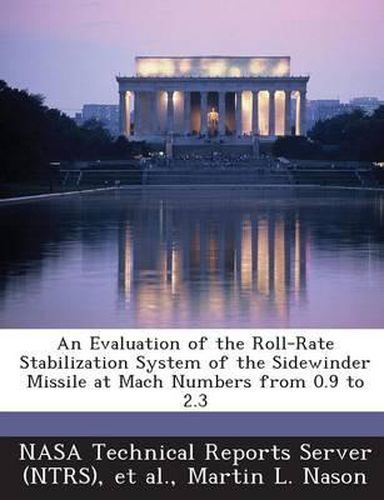Readings Newsletter
Become a Readings Member to make your shopping experience even easier.
Sign in or sign up for free!
You’re not far away from qualifying for FREE standard shipping within Australia
You’ve qualified for FREE standard shipping within Australia
The cart is loading…






A linear stability analysis and flight-test investigation has been performed on a rolleron-type roll-rate stabilization system for a canard-type missile configuration through a Mach number range from 0.9 to 2.3. This type damper provides roll damping by the action of gyro-actuated uncoupled wing-tip ailerons. A dynamic roll instability predicted by the analysis was confirmed by flight testing and was subsequently eliminated by the introduction of control-surface damping about the rolleron hinge line. The control-surface damping was provided by an orifice-type damper contained within the control surface. Steady-state rolling velocities were at all times less than 1 radian per second between the Mach numbers of 0.9 to 2.3 on the configurations tested. No adverse longitudinal effects were experienced in flight because of the tendency of the free-floating rollerons to couple into the pitching motion at the low angles of attack and disturbance levels investigated herein after the introduction of control-surface damping.
$9.00 standard shipping within Australia
FREE standard shipping within Australia for orders over $100.00
Express & International shipping calculated at checkout
A linear stability analysis and flight-test investigation has been performed on a rolleron-type roll-rate stabilization system for a canard-type missile configuration through a Mach number range from 0.9 to 2.3. This type damper provides roll damping by the action of gyro-actuated uncoupled wing-tip ailerons. A dynamic roll instability predicted by the analysis was confirmed by flight testing and was subsequently eliminated by the introduction of control-surface damping about the rolleron hinge line. The control-surface damping was provided by an orifice-type damper contained within the control surface. Steady-state rolling velocities were at all times less than 1 radian per second between the Mach numbers of 0.9 to 2.3 on the configurations tested. No adverse longitudinal effects were experienced in flight because of the tendency of the free-floating rollerons to couple into the pitching motion at the low angles of attack and disturbance levels investigated herein after the introduction of control-surface damping.